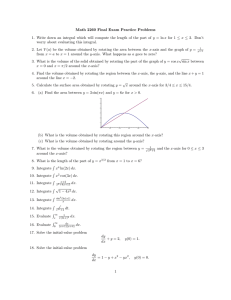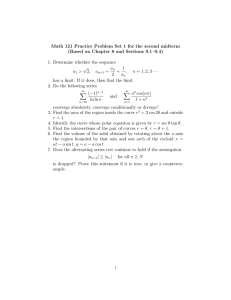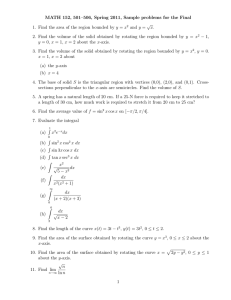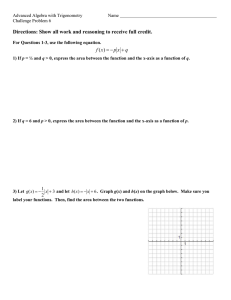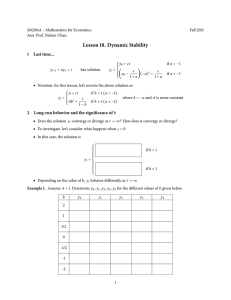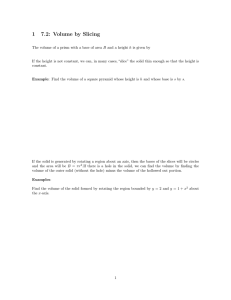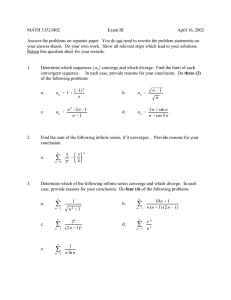Math 2260 Final Exam Practice Problems
advertisement
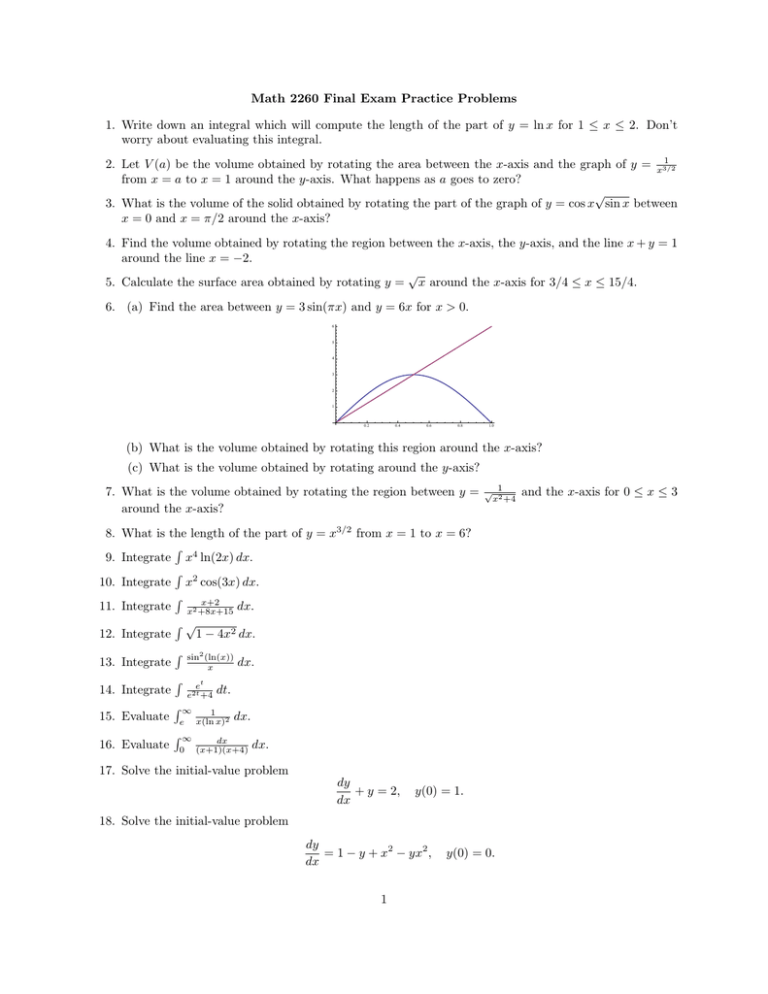
Math 2260 Final Exam Practice Problems 1. Write down an integral which will compute the length of the part of y = ln x for 1 ≤ x ≤ 2. Don’t worry about evaluating this integral. 1 2. Let V (a) be the volume obtained by rotating the area between the x-axis and the graph of y = x3/2 from x = a to x = 1 around the y-axis. What happens as a goes to zero? √ 3. What is the volume of the solid obtained by rotating the part of the graph of y = cos x sin x between x = 0 and x = π/2 around the x-axis? 4. Find the volume obtained by rotating the region between the x-axis, the y-axis, and the line x + y = 1 around the line x = −2. √ 5. Calculate the surface area obtained by rotating y = x around the x-axis for 3/4 ≤ x ≤ 15/4. 6. (a) Find the area between y = 3 sin(πx) and y = 6x for x > 0. 6 5 4 3 2 1 0.2 0.4 0.6 0.8 1.0 (b) What is the volume obtained by rotating this region around the x-axis? (c) What is the volume obtained by rotating around the y-axis? 7. What is the volume obtained by rotating the region between y = around the x-axis? √ 1 x2 +4 8. What is the length of the part of y = x3/2 from x = 1 to x = 6? R 9. Integrate x4 ln(2x) dx. R 10. Integrate x2 cos(3x) dx. R x+2 11. Integrate x2 +8x+15 dx. R√ 12. Integrate 1 − 4x2 dx. R 2 dx. 13. Integrate sin (ln(x)) x R t 14. Integrate e2te+4 dt. R∞ 15. Evaluate e x(ln1x)2 dx. R∞ dx 16. Evaluate 0 (x+1)(x+4) dx. 17. Solve the initial-value problem dy + y = 2, dx y(0) = 1. 18. Solve the initial-value problem dy = 1 − y + x2 − yx2 , dx 1 y(0) = 0. and the x-axis for 0 ≤ x ≤ 3 ∞ 19. Consider the sequence (an )n=1 , where ln(1 + 3/n) . sin(2/n) an = Does the sequence converge? If so, to what? If not, explain why. ∞ 20. Consider the sequence (an )n=1 , where an = n+1 n+2 n . Does the sequence converge? If so, to what? If not, explain why. 21. Which of the following series converge? P∞ n3 (a) n=1 3n P∞ n3 (b) n=1 1+n4 P∞ n3 (c) n=1 1+n5 P∞ cos2 n (d) n=1 1+e−n P ∞ en (e) n=1 n! 22. If you put (−1)n into each of the series in the preceding problem, which ones converge absolutely, which converge conditionally, and which diverge? 23. Find the interval of convergence for each of the following power series. P∞ (x+2)n (a) n=1 n P∞ (x−3)n (b) n=1 1+n2 P∞ (−1)n (x−1)n (c) nen Pn=1 ∞ 2 n (d) n x n=1 24. Find the Taylor series for 2 (a) e−x centered at x = 0 √ (b) x centered at x = 1 25. Estimate e−0.2 to the nearest 0.001. Explain your answer. 26. Does the series ∞ X n7 6n n! n=1 converge or diverge? Explain your answer. 27. Does the series ∞ X 1 √ n + n n=2 converge or diverge? Explain your answer. 28. Find the limit lim x→0 using Taylor series. 2 cos x − 1 ex2 − 1 29. Give a geometric description of the set of points (x, y, z) satisfying the following inequalities. (a) x2 + y 2 + z 2 ≤ 1 and z ≥ 1/2. (b) |x| ≤ 1, |y| ≤ 1, and |z| ≤ 1. 30. Determine the angle between the vectors * * * * u = ı + 3 + 2k and 3 * * * * v = −2 ı + − 2 k
